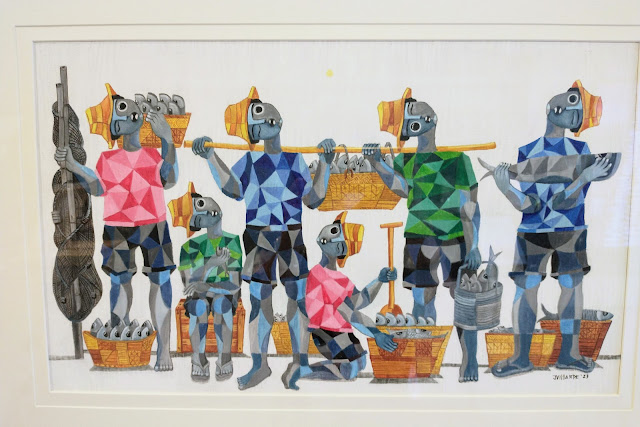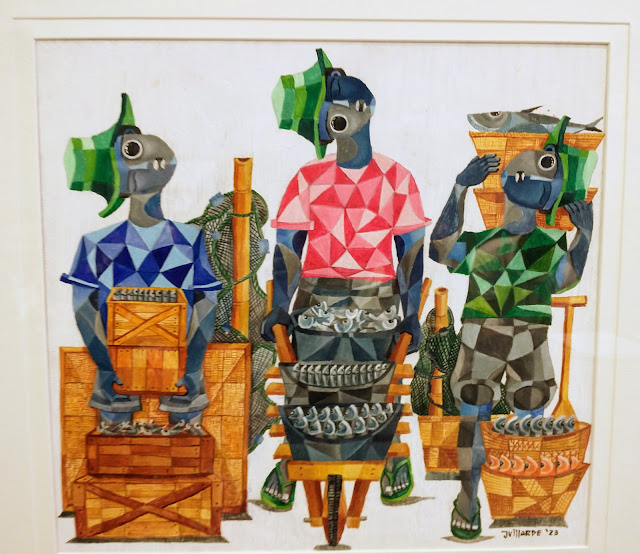Pagtilipon. Acrylic on paper. 2023
Hamungaya (Hiligaynon for fruitful or bountiful) is the solo show of Jonard Villarde at Teddy's Art Space in Roxas City. This series of paintings traces the trajectory of fish from the net cast by fishermen to the porters and couriers who take them in woven boxes to market where it will be sold and end up on our dinner plate. The artist pays homage to the often "unseen" folk who form the chain of hands that deliver food to our table.
Pagtilipon (gathering) of fisherfolk with the tools of the trade: fishing net to catch fish, paddle, baskets to hold fish, the bountiful catch and the pole to carry the baskets of fish.
Kargador. Acrylic on paper. 2023
The Kargador (porter) takes the haul in woven boxes and baskets to the courier for delivery. Note how the artist painstakingly portrays the woven boxes and baskets which he has observed since his childhood.
Fish mobiles. Acrylic on paper. 2023.
Couriers take the catch to market on their bike and on the back of a kargador.
Nilatag. Acrylic on paper. 2023
Now the catch is laid out (nilatag) and ready to be sold. The scale takes a prominent spot in the center of the painting and between the legs of another vendor. The scale is everything in the process of changing hands between vendor and buyer.
Detail from Nilatag
Villarde draws inspiration from the works of Picasso while incorporating elements from his roots in Capiz and the bountiful produce from the sea. Further, he pays homage to Him whom the big round eyes of these fisherfolk are turned up to.
Jonard Villarde beside his painting, Kargador
Jonard Villarde is an educator and visual artist. He hails from Ivisan, Capiz. He has previously exhibited his works at Viva ExCon 2018 and most recently at the Bottles and Vases art exhibition at SM Iloilo. This is his first solo show.
Hamungaya art exhibition will run through March at Teddy's Art Space on Legaspi Street in Roxas City, across from Panublion Museum.
*****
Images by TravelswithCharie






